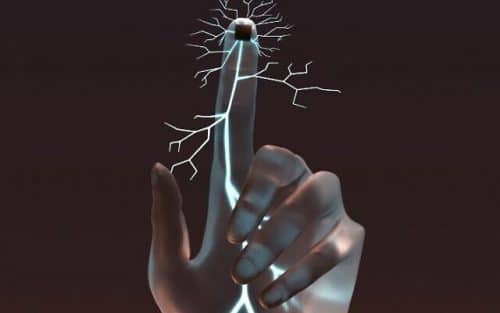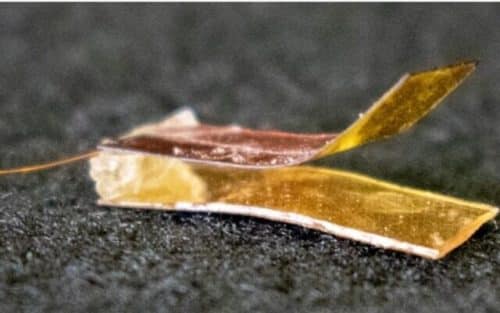Scientists develop a sensor that restores a sense of touch to damaged nerves, giving hope for people with amputation or injuries.
Researchers at Tel Aviv University lab, Israel have developed a tiny sensor that can be implanted into fingers, toes, or any other body part that has lost the sense of touch. It “bypasses” the broken nerves in that area, and “wires” the sensation to other healthy nerves. The sensor was successfully tested on rats, and the results were published in the journal ACS Nano.

The sensor is activated every time the limb touches an object, and it conducts an electric current to the functioning nerve, recreating the sense of touch.
“Loss of sensation can result from a very wide range of injuries, from minor wounds – like someone chopping a salad and accidentally cutting himself with the knife – to very serious injuries,” said Ben Maoz from the Department of Biomedical Engineering, Fleischman Faculty of Engineering, and one of the leaders of the research. “This is super exciting, because we were able to generate something that gives real benefits to people facing real problems, and it all started with a chat between me and a friend.”
According to Maoz, prosthetic limbs that connect to nerves of the body are already existing, however, their challenge was completely different: to give the feel of sense of touch, which has never been accomplished before.
“Even if the wound can be healed and the injured nerve can be sutured, in many cases the sense of touch remains damaged. People lacking tactile sensation cannot feel if their finger is being crushed, burned or frozen.”
The Sensor
The sensor can be implanted on a damaged nerve under the tip of the finger and be connected to another nerve that functions properly. The device consists of two tiny plates less than half a centimetre by half a centimetre in size. When these plates come into contact with each other, they release an electric charge that is transmitted to the undamaged nerve. The sensation depends on the pressure applied while touching something like a weak touch would correspond to a weak tension.
A key feature of the sensor is that it doesn’t require a battery or electricity for charging, but charges on the frictional force. Whenever the device senses friction, it charges itself. The sensor is developed from a biocompatible material that is safe to use in the human body.

“We tested our device on animal models, and the results were very encouraging,” said Maoz, adding that the team will continue animal trials before they move to clinical trials. “At a later stage, we will implant our sensors in the fingers of people who have lost the ability to sense touch. Restoring this ability can significantly improve people’s functioning and quality of life, and more importantly, protect them from danger.”






